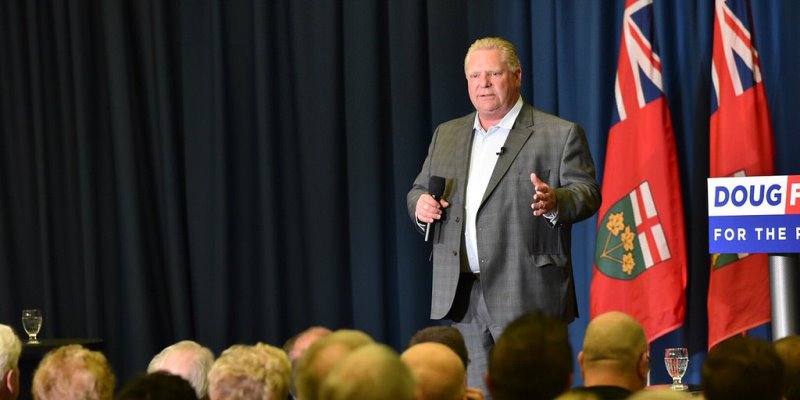Ontario government’s economic plan full of obvious flaws

The Ford government, in the wake of its recent budget, is touting its record over the last six years in creating jobs and building infrastructure. It’s even launched a new advertising campaign called Building Our Economy, which outlines the government’s plan. Upon closer scrutiny, however, it’s clear the government’s economic plan is severely flawed.
For starters, since Premier Ford was elected six years ago, job creation in Ontario has largely occurred in the government sector rather than the private sector, with government-sector employment (federal, provincial and local) in Ontario up 18.5 per cent over the last six years compared to only 11.7 per cent for the private sector.
Moreover, in the year before Premier Ford took office, government-sector employment represented 18.3 per cent of total employment in the province compared to 19.5 per cent in 2023.
Simply put, when government-sector employment grows faster than employment in the private sector, that doesn’t bode well for a healthy economy or sustainable job creation.
The Ford government has also boasted about its plan to build new roads, highways and public transit to increase economic growth. While infrastructure investment is important, the government has largely ignored other meaningful ways to improve economic performance.
For example, Ontario’s uncompetitive tax rates for businesses and individuals have made it difficult to attract and retain high-skilled workers, entrepreneurs and firms. Despite earlier promises to reduce tax rates on personal and business income, the Ford government has left taxes untouched.
Unsurprisingly, there has been a dearth of business investment in the province. A recent study found that Ontario’s private-sector business investment per worker—which includes spending on equipment, machinery, factories and new technologies (but excludes residential homebuilding)—is well below the Canadian average and less than half the average in the United States.
This is alarming because business investment provides workers with the tools and new technologies to produce more and better goods and services. When firms become more productive and profitable, they’re able to pay higher wages to workers, which means business investment is a key driver of improved living standards. Yet the Ford government continues to pay little attention to this major problem.
Finally, the government is touting its plan to subsidize electric vehicle (EV) battery plants. But there are several issues with this strategy. First, business subsidies (a.k.a. corporate welfare) come at a huge cost to taxpayers, and a significant body of research indicates corporate welfare doesn’t produce widespread economic growth or job creation. In fact, it likely hurts the economy.
Second, the government’s EV plan will require a substantial and rapid expansion of the mining and refining of metals critical to EV battery technology, which is unlikely to occur given the scale of material and time required. Electric vehicle production is already being scaled back by automakers as consumer interest in EVs is waning compared to earlier estimates, and actual EV sales have largely not met expectations. Using more taxpayer money to invest in EV battery plants is a risky strategy at best.
The Ford government’s current economic strategy leaves a lot to be desired. Rather than boast about it, the government should re-evaluate its growth plan and its obvious flaws.
Author:
Subscribe to the Fraser Institute
Get the latest news from the Fraser Institute on the latest research studies, news and events.

